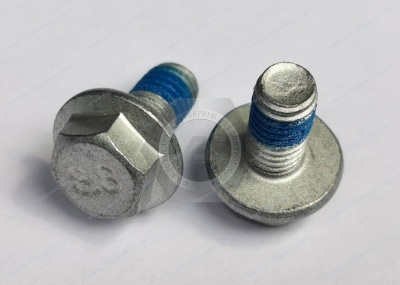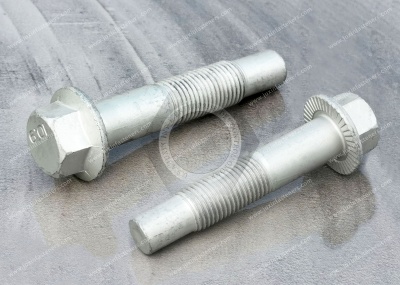Call Us
+86 136 6007 9809
Call Us
+86 136 6007 9809
Jun. 27, 2024
Hexagonal flange bolts specifications and uses industry solutions
Hexagonal flange face bolts are ubiquitous industrial equipment used in industry because they have precise endurance and other characteristics that have been widely used. They are commonly used in highways, railroads, and bridges, including industrial and civil construction, cranes, excavators, and other heavy machinery. With the changes in market demand, hexagonal flange face bolts also derived from a variety of new types of varieties, such as cross groove concave protruding hexagonal head bolts a complement to the hexagonal flange face bolts, and now the basic specifications of the hexagonal flange face bolts and the use of applications.
For high-quality Carbon Steel Flanged Hex Head Screws and professional technical support, don't hesitate to contact us at adelajonly@gmail.com or visit our website at: https://www.juxinfasteners.com.
Hexagonal flange face bolts specification material
The specifications of hexagonal flange face bolts are based on their diameter and length. Diameter is usually measured in millimeters (mm); standard specifications are M6, M8, M10, and so on. The size is generally measured in millimeters (mm); standard specifications are 20mm, 30mm, 40mm, and so on. It should be noted that the specifications do not represent the actual size of the bolt but are used to identify the bolt size.
The material of hexagonal flange face bolts is usually carbon steel or alloy steel. Carbon steel bolts have good strength and toughness and are suitable for general mechanical equipment and structures. Alloy steel bolts have higher strength and corrosion resistance and are ideal for use in some unique environments. Choosing the suitable material can ensure the bolt's service life and safety performance.
1. High carbon steel C%>0.45%. Hexagonal flange surface screws product material is currently not used in the market; primary.
2. Medium carbon steel 0.25% hexagon head screws in carbon steel material are usually called domestic No. 35, No. 45 steel, foreign essential known as 1035, CH38F, 1039, 40ACR, and so on and are mainly used for grade 8 nuts, 8.8 bolts, and 8.8 hexagonal products.
3. Low carbon steel C% ≤ 0.25% domestic usually called A3 steel. Overseas, known as 1008, 1015, 1018, 1022, etc.. Mainly used for 4.8-grade bolts and 4-grade nuts, small screws, and other products without hardness requirements. (Note: Drill nails are mainly used 1022 material.)
4. Alloy steel: In plain carbon steel, alloying elements are added to increase some of the steel's unique properties, such as 35, 40 chromium molybdenum, SCM435, and 10B38. Hexagonal flange bolts are mainly used in the SCM435 chromium molybdenum alloy steel, the main components of which are C, Si, Mn, P, S, Cr, and Mo.
Usage of hexagonal flange bolts
The head of hexagonal flange face bolts consists of two parts: the hexagonal head and the flange face. Its "ratio of support area to stress area" is greater than that of ordinary hexagonal head bolts, so these bolts can withstand higher preload. Their anti-loosening performance is also better, and thus, they are widely used in automobile engines, heavy machinery, and other products. Hexagon head bolts with holes and grooves in the head can be used to lock the bolts together mechanically and reliably prevent loosening.
1. Mechanical equipment fastening: Hexagonal flange face bolts are commonly used to fasten mechanical equipment, such as heavy machinery, aviation engines, automobile engines, and so on. In these applications, the bolts need to quickly and firmly connect the various parts of the mechanical equipment to ensure its safety and stability.
2. Pipe connections: Hexagonal flange face bolts are commonly used to fasten pipe connections. These pipes usually transport liquids or gases requiring a high degree of sealing. Hexagonal flange bolts can create a tight connection at the pipe joints, ensuring the liquid or gas will not leak.
3. Building structures: Hexagonal flange bolts can be used to connect steel members in building structures. These components are often subjected to harsh environments, such as high weights and strong winds, and therefore need to be securely fastened. Hexagonal flange bolts are an ideal choice because they simplify installation and maintenance.


Requirements for the fastening method of flange face bolts
I. Torque-free Plum Blade Wrench or Whacking Wrench
Applicable to general equipment and pipeline flange fastening, according to the screw size and flange pressure level selection. Fastening requirements are as follows.
1) Maintenance unit to develop a fastening program, symmetrical fastening of flanges, and fastening sequence numbering.
2) Position the gasket with four screws at positions 1, 2, 3, and 4 to ensure that the center of the wrapped gasket is within the edge of the flange.
3) Tighten the fixing screws by hand, then insert the other stud screws and tighten them to balance the load, making sure that at least two threads are exposed at each end of the nut.
4) According to the field equipment and flange, according to fastening a circle for a calculation, the reasonable development of the number of fastening (at least three times) and each time the fastening of the pounding load (strength), fastening pounding load (strength) according to the smallest to the largest sequential fastening (such as 50 percent, 80 percent, 100 percent increments), can not be loaded with a load too fast and too large, to prevent the gasket sealing failure.
5) The sequence of each tightening with a torque-free wrench or whacking wrench.
A, tighten the radial opposite two screws to the screws established hammer load (strength).
b, tighten and the previous two screws along the circumference of the other pair of screws about 90 degrees apart; c, continue to tighten until all the rest of the screws.
c. Continue tightening until all remaining screws are tightened to the established hammering load.
6 ) Finally, according to 100% of the hammer load (strength) will be all the screws in the clockwise or counterclockwise direction to tighten once.
Flange face bolts by the hexagonal head with cross groove head and flange (hexagonal below the gasket and hexagonal fixed in one piece) and screw (cylinder with external threads), two parts of the one-piece bolts, need to cooperate with the nut, used to fasten the connection of the two through-hole parts.
1. Hexagonal head type: a flat head, a concave head, and a cross groove.
2. Surface color category: according to different needs, the surface is plated with white, military green, yellow, corrosion-resistant Dacromet.
3. Flange category: according to the use of flange bolts in different locations, the size of the disk requirements are different, and there are flat bottoms and the teeth of the points, with the teeth of the role of anti-slip.
4.According to the connection of the force mode, there are ordinary and reamed holes. Flange bolts for reamed holes should be matched with the size of the holes and used when subjected to transverse force.
In addition, to meet the need for locking after installation, there are holes in the rod. These holes can prevent the bolt from being loosed by vibration. Some flange bolts are not threaded rod to do fine, called fine rod flange bolts. These flange bolts are conducive to the variable force of the joint. There are special high-strength bolts for steel structures, and the head will be made more prominent, and the size will be changed.
Industry uses include machinery, equipment, vehicles, ships, railroads, bridges, buildings, structures, tools, instruments, meters, and supplies.
Contact Us
Tel.:
+86 020 8621 0320
+86 020 3121 6067
E-mail:
Technical Support:
Navigation
SEND INQUIREY